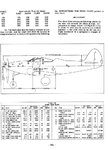Gixxerman
Senior Airman
One thing RAF pilots were decidedly unimpressed with was the thought of half a ton of engine, poised behind their kidneys, and liable to break free in a forced landing.
I wonder how much of this is just illogical psychology, afterall half a ton of engine in front of you poised to break free and crush you from the other direction in a forced landing is hardly a much better prospect.
Still, if the RAF guys expected to fly them didn't like them then it's no surprise they didn't see much service in the RAF.
The Russians apparantly loved them (and the more powerful King Cobra version too).
.....those long driveshafts, weren't there stories of balance vibration issues with that sort of installation?
(personally it'd be the thought of going into combat with one of those doing a couple of hundred/thousand RPMs between my legs that gave me the heebee-geebees, one lucky/unlucky hit starting it to go off balance out of shape would not be the stuff for the making of a pleasant day!)
Last edited:

